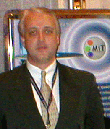|
|
This topic comprises 2 pages: 1 2
|
|
Author
|
Topic: kw and Lumens
|
|
|
|
|
|
|
|
|
|
|
|
|
Paul Mayer
Oh get out of it Melvin, before it pulls you under!

Posts: 3836
From: Albuquerque, NM
Registered: Feb 2000
|
 posted 05-24-2005 02:12 AM
posted 05-24-2005 02:12 AM





12fL is what people have been using for video since that's about what a film projector will put out with clear film in the gate, assuming that machine puts out 16fL with no film in the gate (SMPTE 196M).
I'd be willing to bet that that Christie spec assumes a 2.39 AR instead of 1.85. Try running your numbers again using a 'scope image at 75' width and see what kind of lumen numbers you get.
As for determining watts needed once you know lumens, there's so many variables that affect that calculation. Lamphouse alignment and efficiency, filters, lenses, stop-down rings, yada yada. So it's tough to come up with a consistent lumens-to-lamp watts ratio. It'll be different for each equipment combination.
It seems that the early DLP machines did need a lot of light, e.g. 7K lamps when film in the same installation could get by with less. At least that's my impression from the few installs I've personally seen. With the latest machines I really don't know. I'm sure the guys with current install experience will comment in the morning. [Edit: Ah, I see Michael is up at this hour... ![[Smile]](smile.gif) ] ]
As for me, it's past my bedtime. Gotta finish grading and get my grades turned in tomorrow. ![[Smile]](smile.gif)
| IP: Logged
|
|
|
|
|
|
|
|
|
|
|
|
|
|
|
|
|
|
|
|
All times are Central (GMT -6:00)
|
This topic comprises 2 pages: 1 2
|
Powered by Infopop Corporation
UBB.classicTM
6.3.1.2
The Film-Tech Forums are designed for various members related to the cinema industry to express their opinions, viewpoints and testimonials on various products, services and events based upon speculation, personal knowledge and factual information through use, therefore all views represented here allow no liability upon the publishers of this web site and the owners of said views assume no liability for any ill will resulting from these postings. The posts made here are for educational as well as entertainment purposes and as such anyone viewing this portion of the website must accept these views as statements of the author of that opinion
and agrees to release the authors from any and all liability.
|

 Home
Home
 Products
Products
 Store
Store
 Forum
Forum
 Warehouse
Warehouse
 Contact Us
Contact Us




 Printer-friendly view of this topic
Printer-friendly view of this topic









![[Smile]](smile.gif) ]
]





